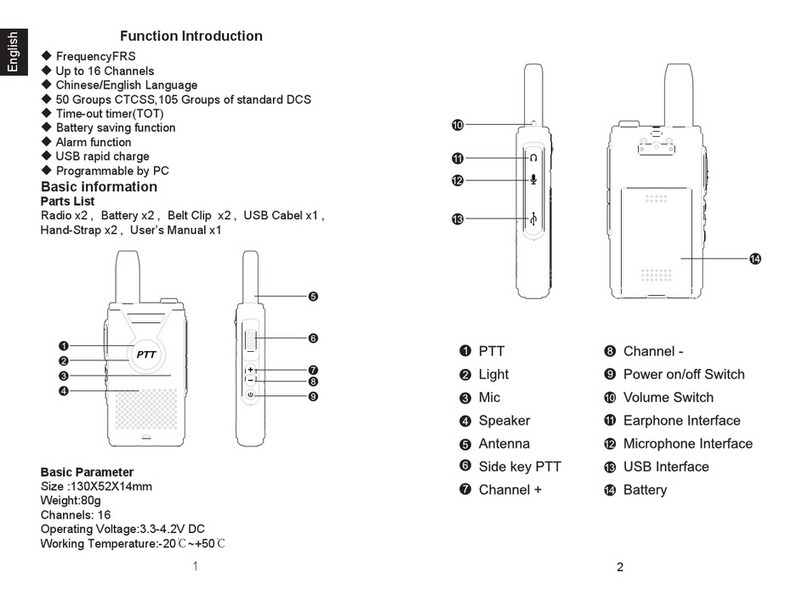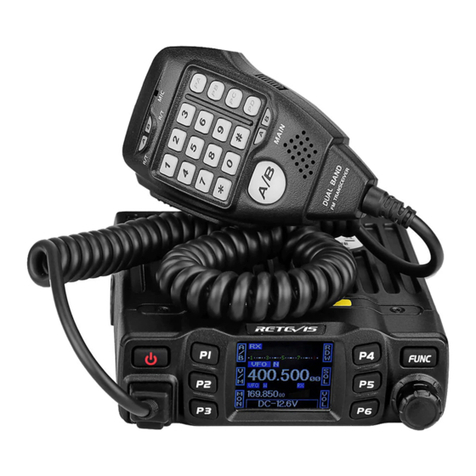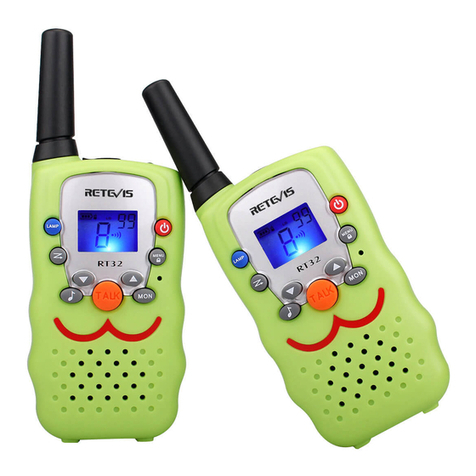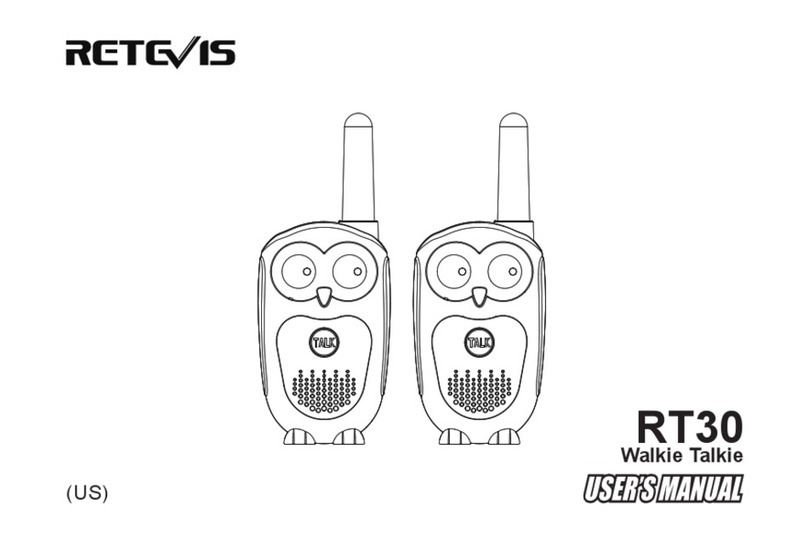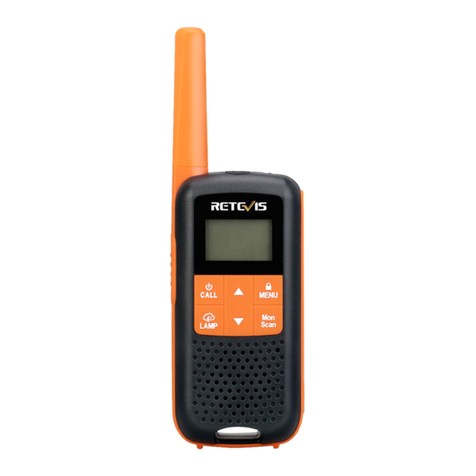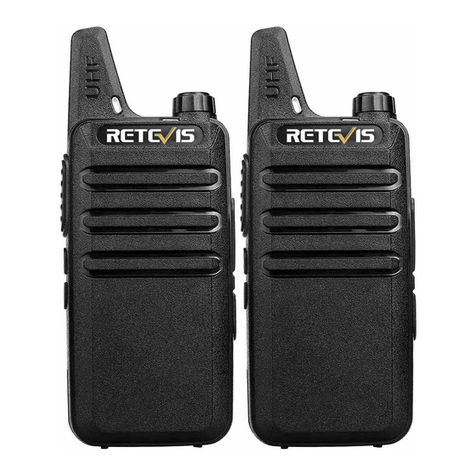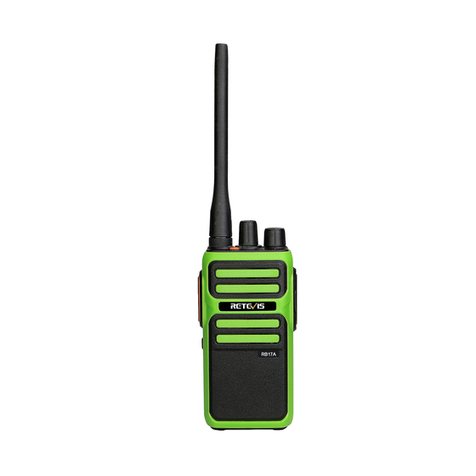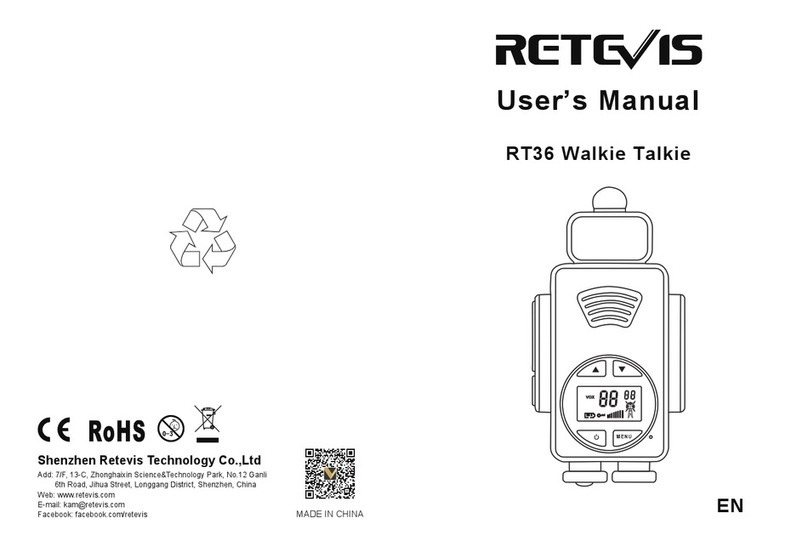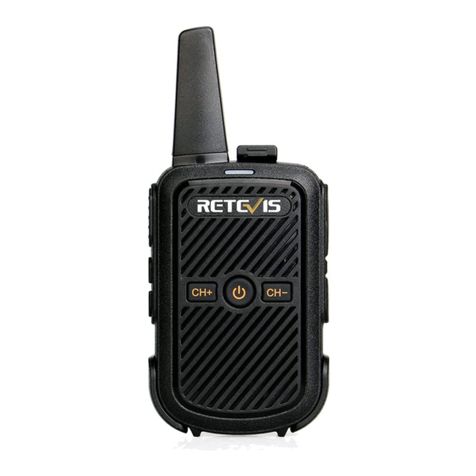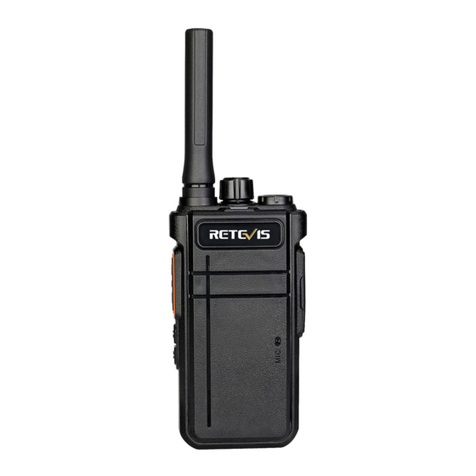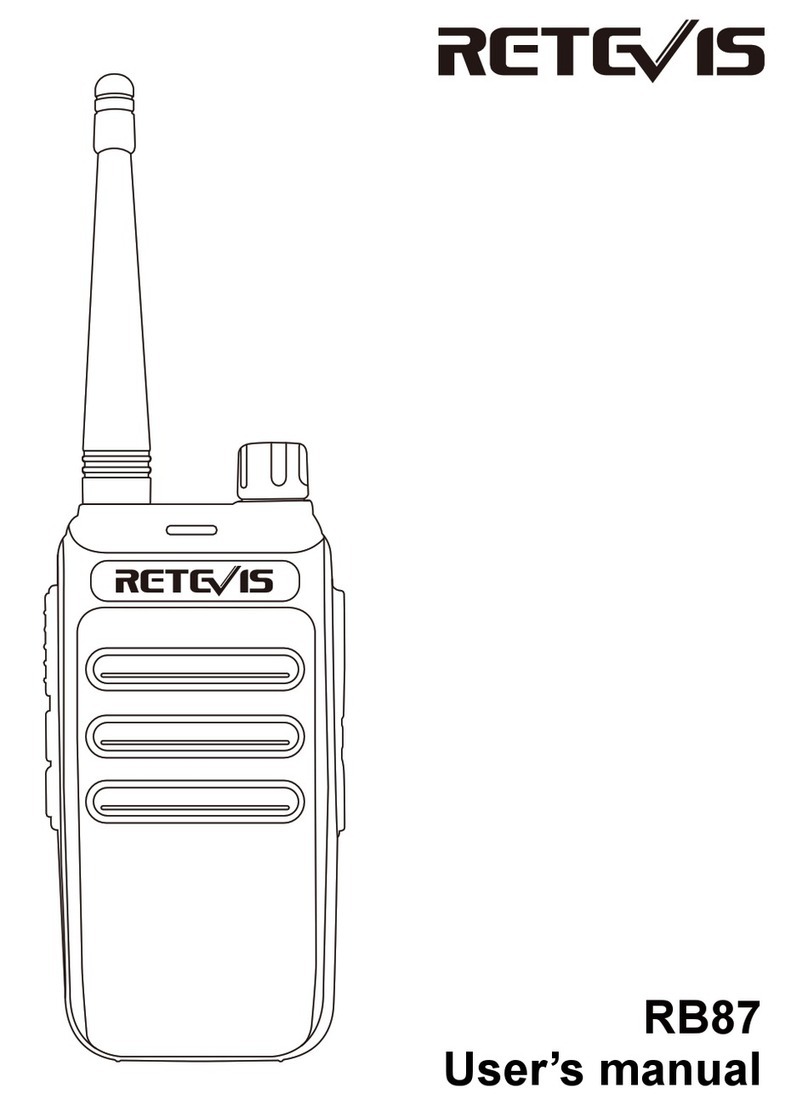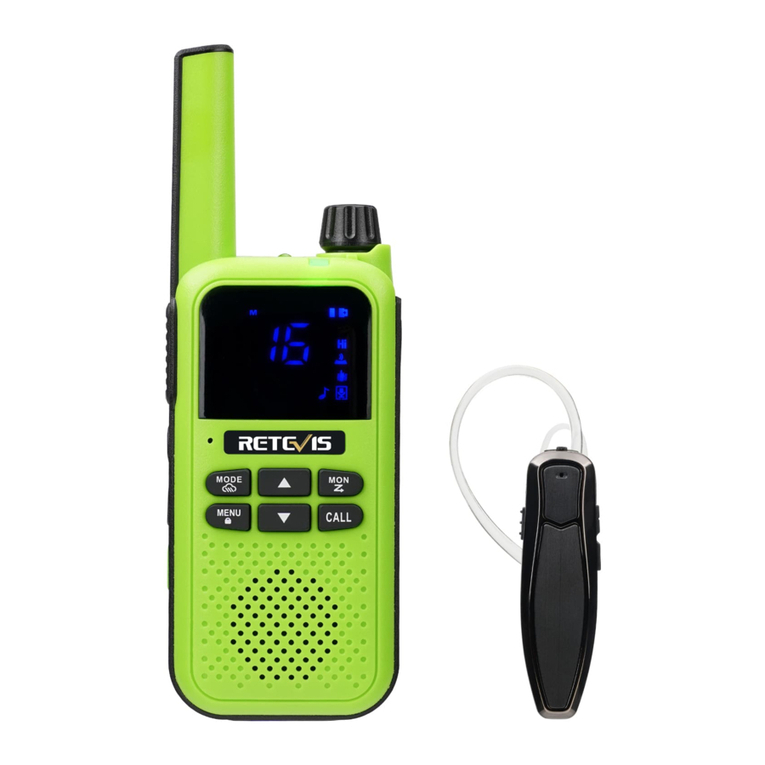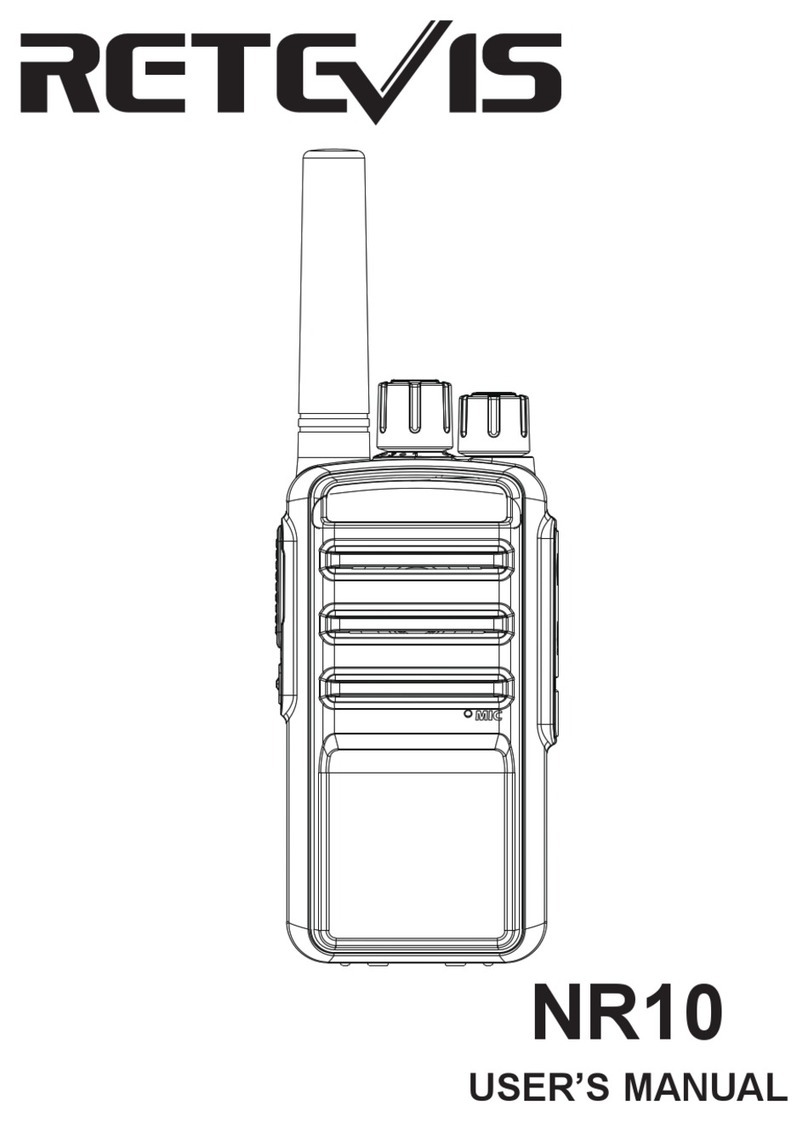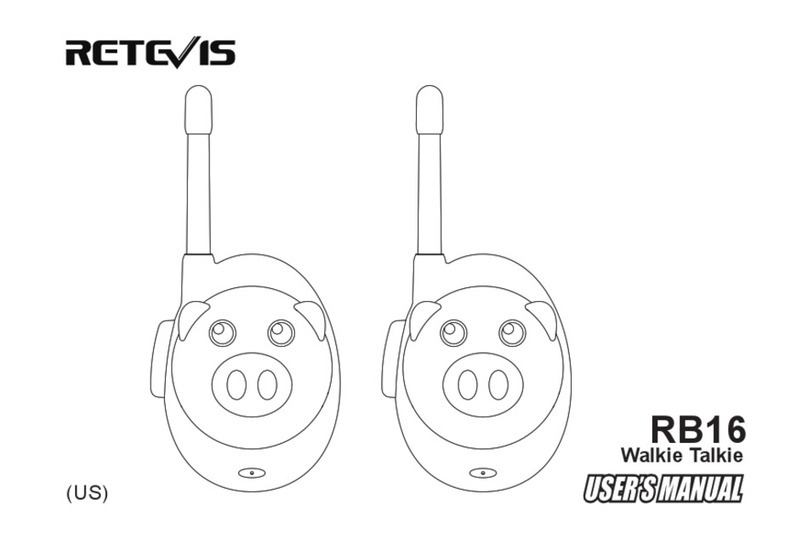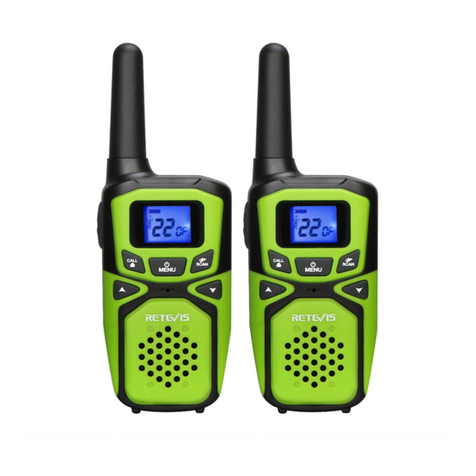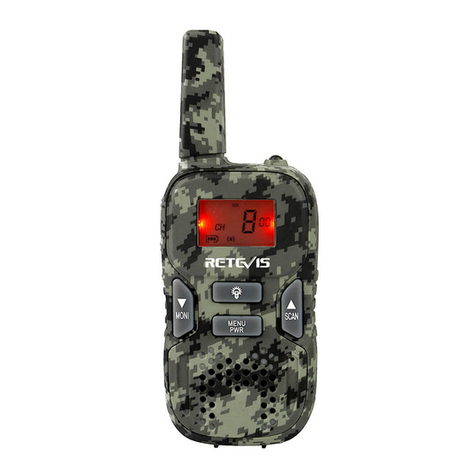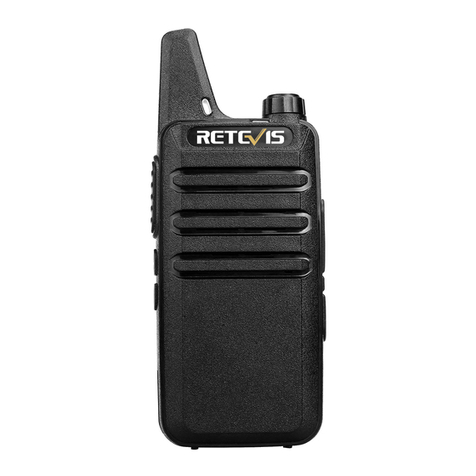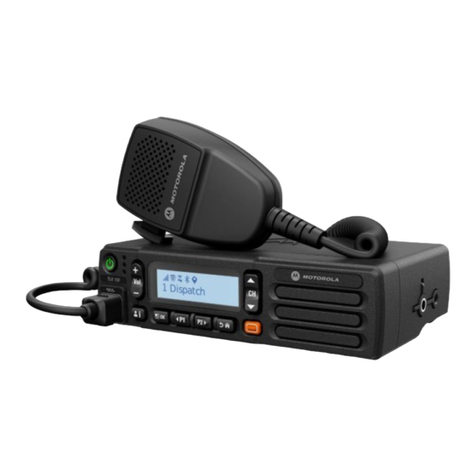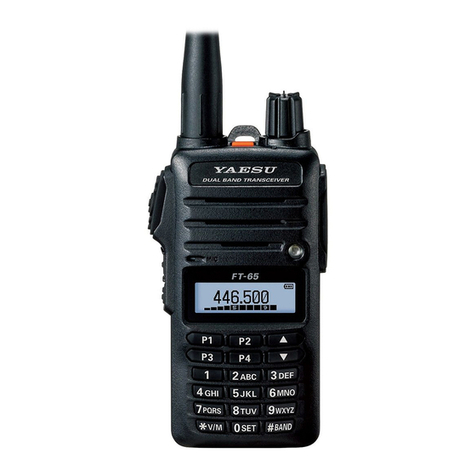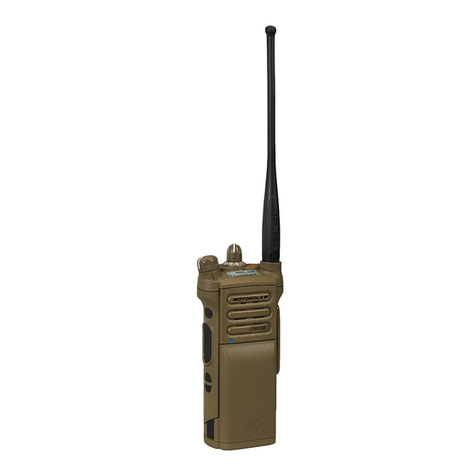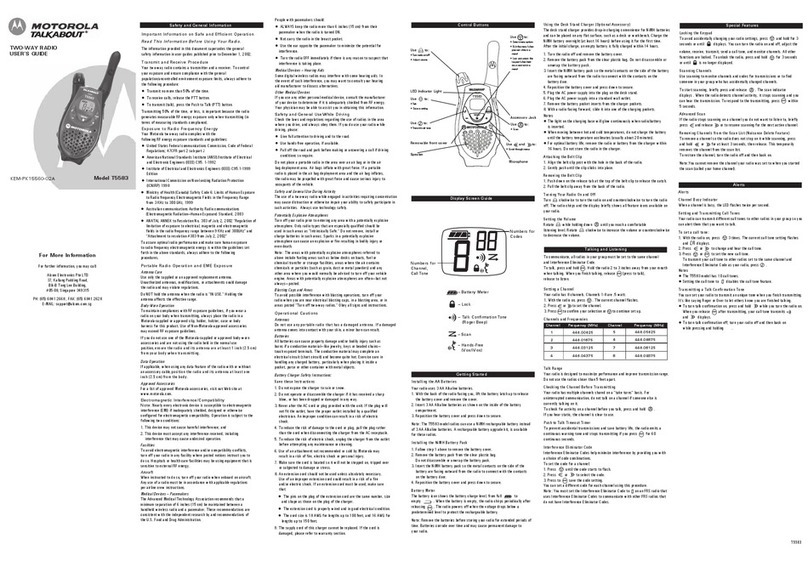8
RF exposure levels. In addition, manufacturers also
recommend specific operating instructions to users of
walkie talkie. These instructions are important because
they inform users about RF energy exposure and
provide simple procedures on how to control it.
Please refer to the following websites for more
information on what RF energy exposure is and how
to control your exposure to assure compliance with
established RF exposure limits: http://www.who.int/en
Local Government Regulations
When walkie talkie are used as a consequence of em-
ployment, the Local Government Regulations requires
users to be fully aware of and able to control their
exposure to meet occupational requirements. Exposure
awareness can be facilitated by the use of a product
label directing users to specific user awareness
information. Your Retevis walkie talkie has a RF
Exposure Product Label. Also, your Retevis user
manual, or separate safety booklet includes information
and operating instructions required to control your RF
exposure and to satisfy compliance requirements.
Radio License
Governments keep the radios in classification, most
of the classified walkie-talkie need to get local
government License, and operation is allowed. The
detailed classification and the use of your two radios,
please contact the local government radio management
departments. For the following specified classification:
the USA FRS, Australian CB, the individual license is
not required.
Compliance with RF Exposure Standards (If
appropriate, Reference to the actual product’s
Safety Marking)
Your Retevis walkie talkie is designed and tested to
comply with a number of national and International
standards and guidelines (listed below) for human
exposure to radio frequency electro-magnetic energy.
FCC ID
The FCCID means: This radio complies with the IEEE
(FCC) and ICNIRP exposure limits for occupational
/controlled RF exposure environments at operating
duty factors of up to 50% talk-50% listen and is
approved for occupational use only.
IC ID
This device complies with Industry Canada
license-exempt RSS standard(s). Operation is subject
to the following two conditions:
(1) This device may not cause interference, and
(2) This device must accept any interference, including
interference that may cause undesired operation of
the device.
In terms of measuring RF energy for compliance with
these exposure guidelines, your radio generates
measurable RF energy only while it is transmitting
(during talking), not when it is receiving (listening) or
in standby mode.
Note: The approved batteries, supplied with this radio,
are rated for a 5-5-90 duty factor (5% talk-5%
listen-90% standby) even though this radio
complies with FCC occupational exposure limits
and may operate at duty factors of up to 50% talk.
